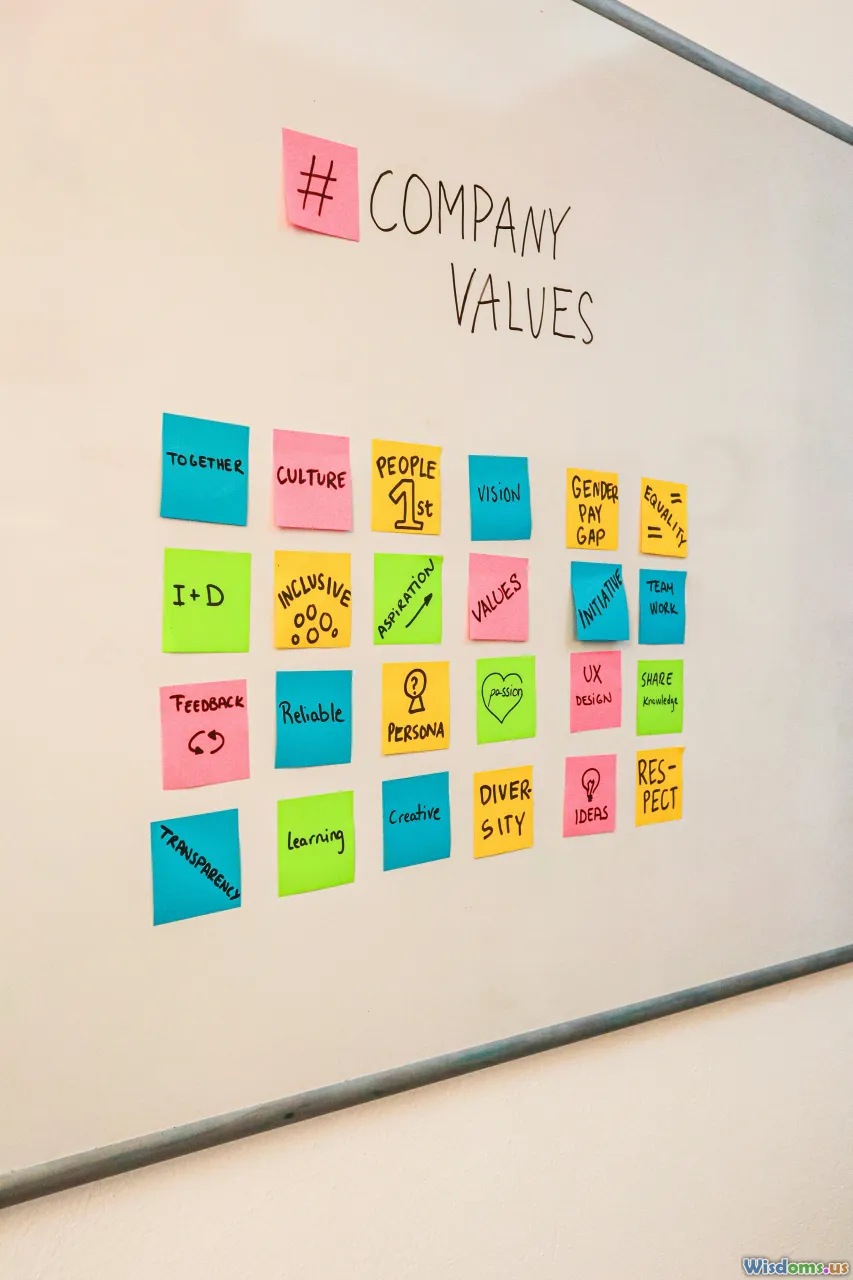
Common Data Mining Mistakes Even Experts Make
14 min read Discover critical data mining mistakes even experienced professionals make, and how to effectively avoid costly errors in advanced analytics projects. (0 Reviews)
Common Data Mining Mistakes Even Experts Make
Data mining is often seen as the gold mine of modern business and scientific insight—a gateway to competitive edges, customer understanding, and breakthrough innovation. However, even seasoned professionals can succumb to pitfalls that compromise outcomes and put projects at risk. Rather than just celebrating success stories, it’s essential to explore where experts go astray—and how you can avoid their missteps.
The Lure of Overfitting: Letting the Model Memorize the Past

One of the greatest temptations in data mining is to let your model get too good—on your historical data, at least. Overfitting occurs when an algorithm captures noise instead of just the underlying pattern. This is particularly alluring with powerful models like neural networks or deep decision trees, which can fit intricate datasets remarkably well—sometimes too well.
The Classic Symptom
An overfitted model yields stellar performance on training datasets but falls flat on unseen data. Imagine a credit scoring algorithm that assigns perfect risk scores to past customers, yet misclassifies new applicants, failing to spot genuinely risky profiles. Such a misjudgment could lead companies to approve harmful loans and suffer substantial losses.
Why Experts However Succumb
- Subtle Complexity in Big Data: With millions of records, it’s often assumed overfitting is less of a concern. Yet, the curse of dimensionality (too many features relative to examples) means overfitting can still emerge subtly.
- Pressure for short-term results: Corporate or research demands may push experts to deliver impressive metrics—sometimes at the expense of generalization.
- Inadequate validation: Even those familiar with k-fold cross-validation can misapply it, for example, failing to keep time-series splits strictly non-overlapping.
Avoidance Tactics
- Limit model complexity where possible.
- Embrace regularization techniques (such as Lasso or Ridge for regression tasks).
- Use robust out-of-sample validation, and whenever possible, test performance on truly new data points.
- Monitor for performance collapse when moving from old to fresh data after model deployment.
Neglecting Data Preprocessing and Cleaning

It’s easy for experts to underestimate the impact of data quality; after all, debates often focus on model architectures and algorithms. However, seasoned analysts admit that around 80% of real-world data mining is about cleaning the data.
Common Mistakes
- Ignoring outliers incubated by sensor glitches or manual input errors.
- Failing to treat missing values rigorously—sometimes they’re replaced with mean values or just dropped, but certain fields (like age or transaction count) might have their own reporting nuance.
- Inconsistent categorical encodings: For example, merging datasets where city names are spelled differently ('New York' vs. 'NYC'), which can inadvertently create duplicates or skew results.
Example
Consider a medical study merging hospital records from different regions. If one region codes 'yes' as '1' and another as 'Y', a careless merge could split a vital variable, undermining all analyses.
Remedies
- Systematically audit variable formats and outlier counts before mining.
- Visualize distributions and relationships before leaping to conclusions.
- Employ robust imputation techniques for missing data—considering statistical imputation or model-based approaches where context matters.
- Document every detail; tomorrow's you will thank you when another data iteration lands.
Falling Victim to Feature Over-Engineering

Feature engineering—the craft of creating new input variables—remains a critical skill in data mining. Yet, excessive or poorly considered feature additions can wreak havoc.
The Paradox of Too Many Features
- High-dimensional spaces can lead to sparsity, making every data point feel like an exception.
- Complex engineered features might encode leakages—future data sneaking into your predictions, a critical breach that inflates accuracy misleadingly.
Real-World Oversights
Take the case of a retail sales forecast using features such as 'total weekly sales.' Including future weeks’ numbers (even inadvertently) biases the results. Or imagine predictive maintenance for factory machines—if features like 'day until failure' are used, a model will cheat the task.
Best Practices
- Rigorously examine the source and timing of each feature: ask whether data would have been available at prediction time.
- Favor simplicity: a less complex feature set often outperforms a convoluted one.
- Use feature importance scoring and recursive feature elimination to strip away redundancy.
Misunderstanding the Data’s Business Context

No expertise in algorithmic wizardry can substitute for deep business or domain understanding. Even statistically elegant models will fail if the data scientist doesn’t comprehend how inputs relate to real-world outcomes.
Illustrative Scenarios
- Predicting customer churn without factoring in contractual nuances or cultural aspects of customer loyalty in different countries.
- Classifying medical conditions using variables that, while statistically associated, have no real causal connection—such as mixing up symptoms and side-effects.
Bridge the Gap
- Establish tight collaboration with in-house experts or domain specialists.
- Map features to business-relevant questions—every variable considered should relate directly to a plausible action or decision.
- Deploy storytelling: construct narratives around your data and model discoveries to validate their logic both numerically and experientially.
Blind Faith in Automated Model Selection

Automated machine learning (AutoML) tools promise hands-off workflows and optimized outcomes. But even sophisticated experts get trapped by their convenience, overlooking nuances.
Overlooked Risks
- AutoML methods may over-tune hyperparameters for current data distributions, but flounder as the real-world environment shifts.
- Interpretable models occasionally get discarded purely on performance scores, even though their clarity could enable crucial business adoption.
Case Study
A fintech startup automated credit approval using AutoML. While the tool yielded a highly accurate black-box model, regulators pushed back due to lack of transparency. This forced the company to rebuild the pipeline from scratch, costing crucial time-to-market.
Action Points
- Treat AutoML output as a starting point, not the finish line.
- Always scrutinize automated feature selection and cross-validate with human intuition.
- Prioritize models that balance performance and interpretability, especially when stakeholder trust or regulations are involved.
Inadequate Monitoring and Feedback Loops

Launching a data mining project is never the end of the journey. Yet many organizations—even think tanks with credentialed experts—forgo structured ongoing monitoring.
Problem Manifestations
- Data drift: Customer behavior changes, but the model, trained on old patterns, misses novel trends.
- Feedback loop neglect: If model outputs change end-user decisions, this needs to be monitored—otherwise, models may become self-defeating.
Tangible Example
A large e-commerce site noticed deteriorating recommendation clickthrough rates. Investigation revealed the model trained on pre-pandemic sessions wasn’t adapting post-lockdown, as new consumption patterns emerged.
Implementing the Fix
- Set up real-time dashboards to compare model predictions with actual outcomes.
- Re-train models periodically or use online learning techniques.
- Collect and act on user feedback to calibrate or update model assumptions.
Skipping Reproducibility and Documentation

Proper documentation and reproducibility remain a surprisingly common stumbling block. Even veterans sometimes overlook the rigorous protocols needed to recreate findings.
Common Error Scenarios
- Failing to archive the exact dataset and code versions used for final models.
- Changes in data cleaning scripts over time, silently altering experimental outcomes.
- Reliance on local machine environments—undervaluing containerization or environment management.
Strategies for Robustness
- Adopt workflow tools like Jupyter Notebooks, DVC, or MLflow for automatic tracking of experiments, parameters, and results.
- Use version control not just for main code, but for configuration files and documentation.
- Invest in data dictionaries, pipeline schematics, and accessible README files tailored for new joiners (or your future self).
Overlooking Ethical and Legal Considerations

Ethical slip-ups in data mining are not limited to rookies. Pros can also neglect the sweeping impact of algorithms on communities, legal boundaries, and reputational risks.
Typical Slipups
- Using protected demographic features (like gender or race) without considering fairness constraints.
- Applying data from one region to another, disregarding international data privacy regulations like GDPR.
Take for Instance
When Amazon trialed a résumé screening system, it trained on historical data where past bias against gender and some colleges was prevalent. The system quickly learned to downgrade non-male operators, reproducing and amplifying old injustices.
Safeguards
- Apply bias detection and fairness metrics during model evaluation (such as disparate impact ratios, equalized odds).
- Scrutinize whether data usage is compliant—sometimes, the best pipeline is the one you never deploy.
- Engage with stakeholders from privacy, legal, and subject matter groups early.
Treating Data Mining as a "One-and-Done" Activity

Finally, many data mining practitioners allow project inertia to set in after the first successful implementation. New market movements, regulatory changes, and advanced attacker methods (in cybersecurity) can turn yesterday’s top-tier model obsolete.
Real-World Pattern
A bank released a fraud detection system that performed exceptionally in 2021. By 2023, as scam tactics mutated, incident rates soared—even without visible model errors. Experts had neglected consistent re-evaluation.
Staying Ahead
- Schedule regular audits, not just of performance, but also input distributions and external changes.
- Stay up to date with advancements in algorithms and adversarial behavior.
- Foster an organization-wide culture for ongoing learning and responsive risk management.
Mistakes in data mining are part of the learning curve—even storied experts falter at times. However, the best practitioners remain vigilant, continually questioning assumptions and embracing rigorous, collaborative, and ethical frameworks. With thorough preparation, cross-disciplinary partnership, and adaptive strategies, your data mining efforts can thrive, steering clear of the common pitfalls that have tripped up even the brightest minds.
Rate the Post
User Reviews
Popular Posts




















